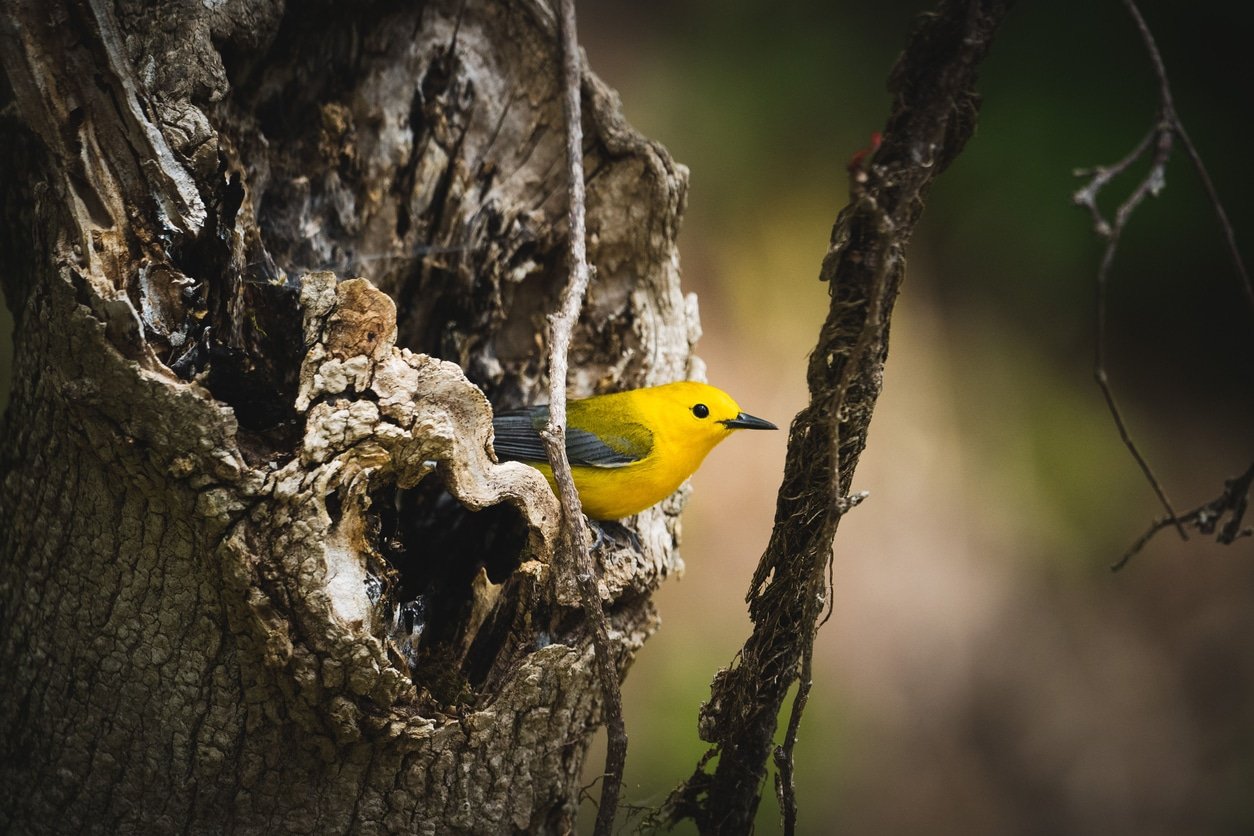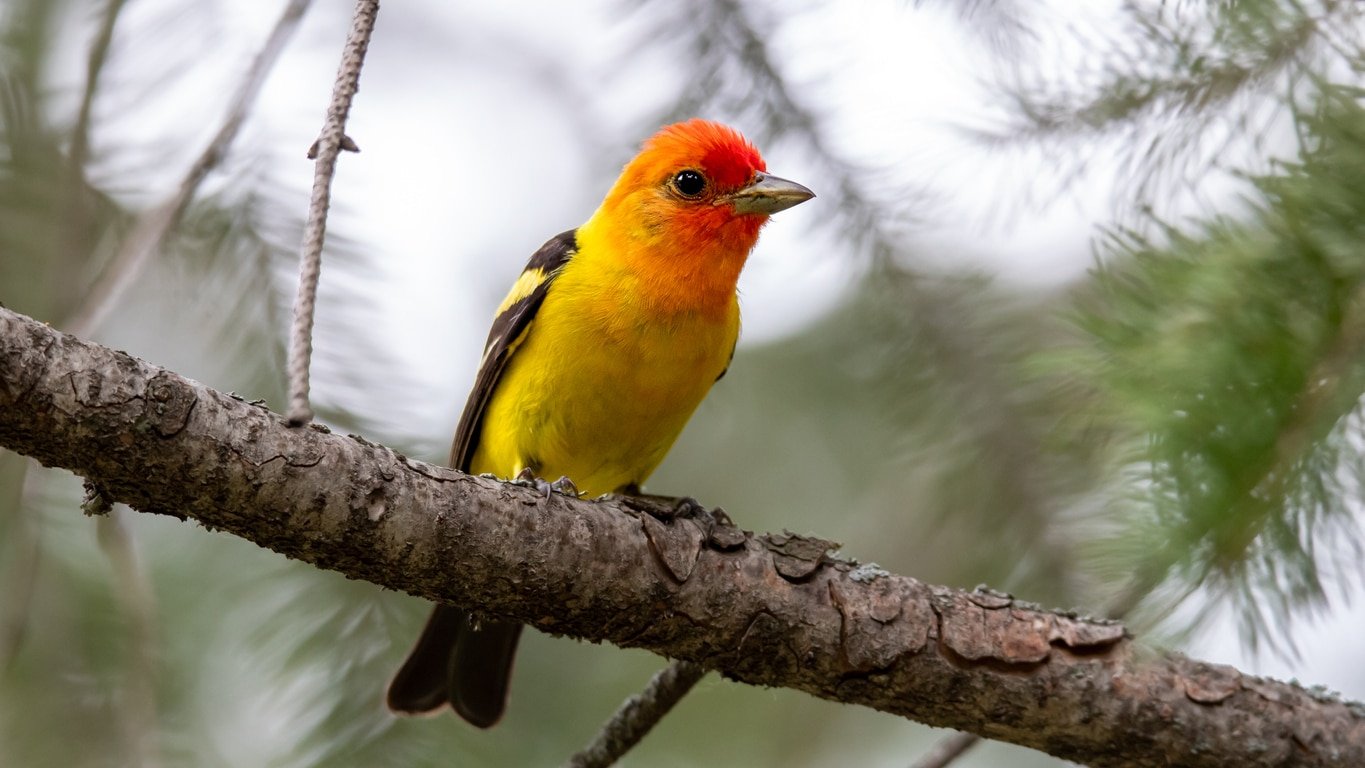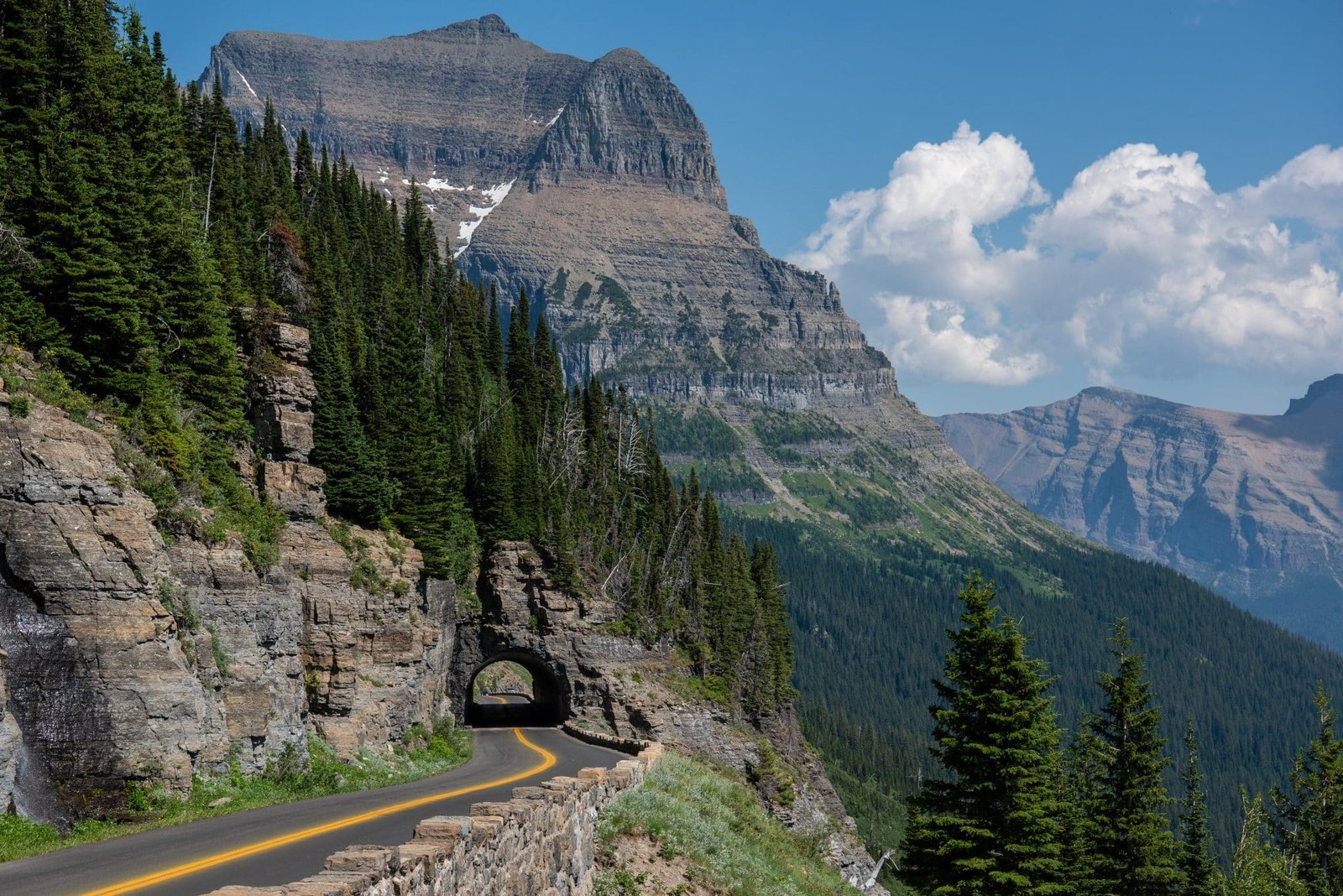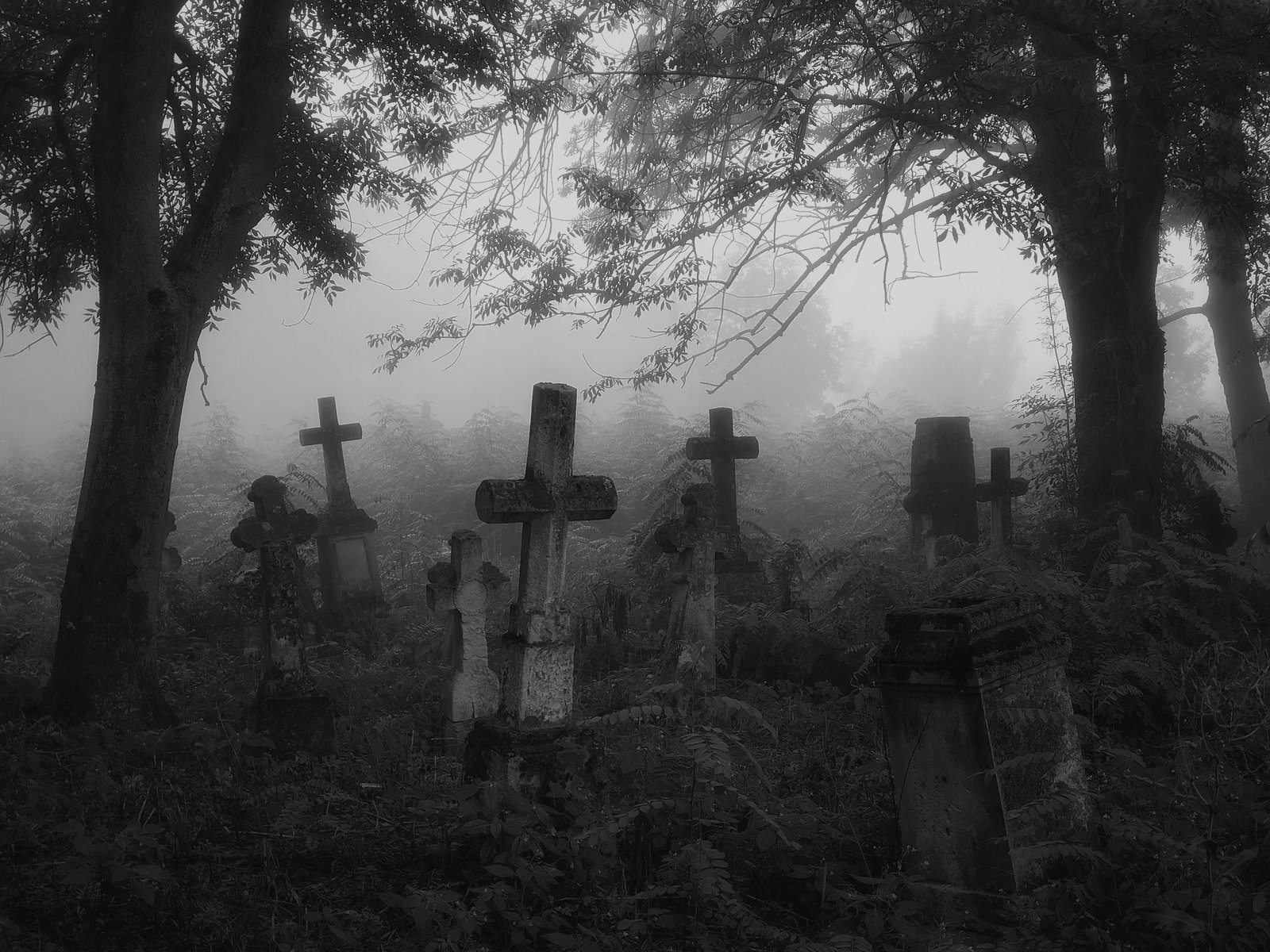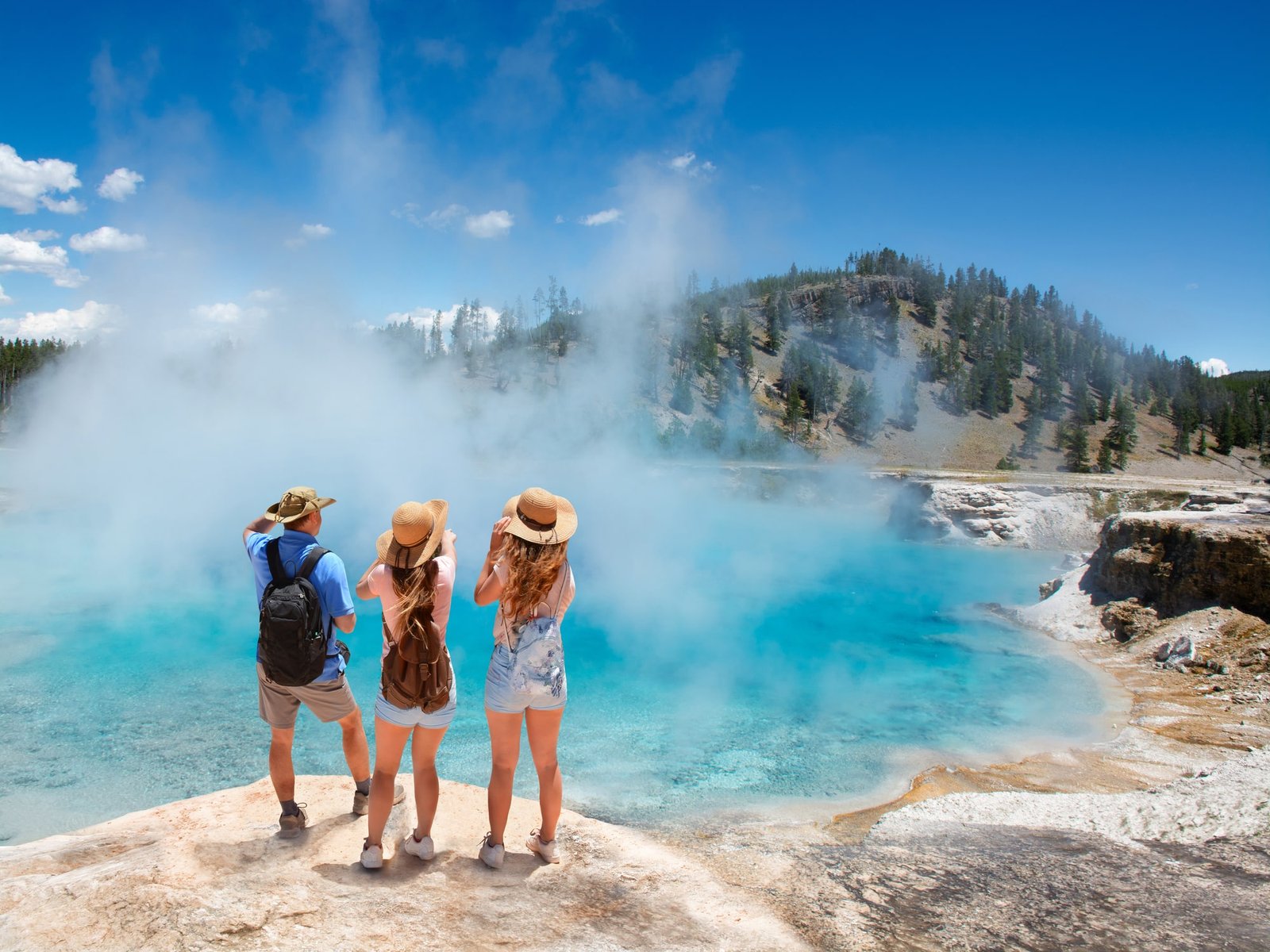Common, Rare & Colorful Birds of Wyoming: Photos, Where to Find Them & More!
|
Prefer listening over reading? We got you covered!
Getting your Trinity Audio player ready...
|
Wyoming is home to over 330 bird species. Some spend all year in Wyoming while others are simply there during summer and winter migrations.
But because Wyoming has so many open spaces, forests, fields, prairies, and fantastic natural habitats with limited humans, it’s a real paradise for birds.
Whether you’re a keen birdwatcher visiting Yellowstone National Park or just interested in what birds you might see in your backyard, follow along as we go through some of the most common, colorful, and then rare birds in Wyoming.
We not only show you what they look like, but even share with you the best places in the state to see them, and some interesting facts!

Common Birds in Wyoming Worth Looking Out For
How common a bird is in Wyoming will depend on where you are. If you’re in a suburban setting and seeing birds in your backyard, they will often be American Robins, Mourning Doves, European Starlings, or even brightly colored birds like the Northern Cardinal.
However, if you’re out birdwatching or hiking in the national parks, you’ll see a host of other birds commonly seen in the wild. We show you some of the most common birds in both settings below.
1. Gray Jays
Gray Jays, also called the Canada Jay, are large songbirds but small compared to other Jays. They can be 13 inches long with 18-inch wingspans and weigh up to 70 grams. They are dark grey on top with light grey below, and a black nape that comes around to cover their eyes.
Gray Jays will store food during summer to be used during winter. However, with a warming climate, many of the food stores are spoiling too early, which has resulted in a decline of Gray Jays in some regions.
Habitat
Gray Jays prefer areas with a high concentration of spruce trees, such as black, white, engelmann, as well as jack and lodgepole pine trees.
The best places to spot Gray Jays within Wyoming are Yellowstone National Park, Grand Teton National Park, and Medicine Bow National Forest.
Endangered Status
Gray Jays are not endangered and have a stable population of 26 million.
2. Northern Cardinal
The Northern Cardinal is a striking bright red bird. This bird gets its Cardinal name from Catholic cardinals who wear bright red robes. It’s a medium-sized songbird measuring up to 9 inches long with a 12-inch wingspan and weighing up to 45 grams.
The males are almost exclusively bright red, with a black face mask covering the eyes and down to the upper neck. Its red does become slightly darker on its back and outward on its wings. The females are greyish-brown with a slight light red tinge to some feathers.
Habitat
Northern Cardinals are permanent residents of Wyoming and can be found throughout woodlands, gardens, parks, and wetlands. They will also be spotted in residential areas because they’re especially fond of bird feeders in people’s backyards.
Endangered Status
Northern Cardinals are not endangered and are one of the most common birds in Wyoming. It’s estimated there are around 100 million of them globally,

3. Mourning Dove
Mourning Doves are one of the most common and widespread birds in North America. They’re a medium-sized dove measuring up to 12 inches long with an 18-inch wingspan and weighing up to 128 grams.
They’re a light grey-brown on their upper feathers with light pinkish lower feathers, black spots on their wings, and a white tail.
They are one of the biggest gamebirds in the United States, with between 20 million – 70 million shot each year.
Habitat
Mourning Doves prefer open habitats such as urban parks, farms, prairies, grasslands and can sometimes be found in lightly wooded areas. They have adapted well to live in human-populated areas.
Endangered Status
Mourning Doves are not endangered, and the population is estimated to be 475 million.

4. American Pipit
American Pipits are a small songbird that goes by the name Buff-bellied Pipit outside of North America. They can grow to be 7 inches long with 11-inch wingspans and weigh up to 26 grams.
They’re not brightly colored and are mostly brown-grey with slightly paler chest and bellies.
American Pipits are often described as strutting along happily, looking for food on the ground while waggling their tails. When feeding, they’re looking for insects of all kinds, including beetles, caterpillars, moths, and anything else that comes into their path.
Habitat
American Pipits prefer open or bare spaces, including tundra and fields with short grass. They can even be found where humans have cleared space, such as airfields or wheat fields.
The best place in Wyoming to spot American Pipits is in the Medicine Bow National Forest at higher elevations in the tundra.
Endangered Status
The American Pipit is not endangered and has an estimated global population of around 22 million.
5. Greater Sage-Grouse
Greater Sage-Grouse are the largest type of grouse bird in North America. They can grow to 30 inches tall with a 38-inch wingspan and weigh up to 7 lbs.
They are a mottled grey-brown with white spots over most of their body but have a black belly. Females have a white chest, while males have a black chest and throat. Males also have two yellow air sacs that they inflate during courtship.
During courtship, mainly from March to May, the males will perform elaborate dances to entice the watching females to pick them as mates. This is where their yellow air sacs will come out on display.
Habitat
Greater Sage-Grouse will often be found in grassland and sagebrush. You can also find them in meadows or areas close to sagebrush-grassland while they’re looking for food.
The best places to find them within Wyoming are Seedskadee National Wildlife Refuge and Grand Teton National Park.
Endangered Status
Greater Sage-Grouse are near-threatened with a global population of 200,000 to 500,000. The biggest factor to the decline is habitat loss, but this is not the case in Wyoming.
6. Western Meadowlark
Western Meadowlarks are a medium-sized songbird and the second most common state bird in the US, with Northern Cardinals first.
They can grow to be 10 inches long with a 16-inch wingspan and weigh up to 120 grams. Their upper feathers are black, brown, and white in intricate patterns, and they have bright yellow under feathers with a black V on their chest.
Eastern Meadowlarks and Western Meadowlarks don’t often interbreed but will fight over territory with each other if their environments do overlap. The Eastern Meadowlark can be found in the more eastern parts of Nebraska.
Habitat
Western Meadowlarks can be found anywhere there is grassland, prairies, or agricultural land.
Endangered Status
The Western Meadowlark is not endangered and are extremely common birds in Wyoming. There are an estimated 30 million of them worldwide.
7. Common Grackle
The Grackle is a large blackbird measuring up to 13 inches long with an 18-inch wingspan and weighing up to 122 grams. They are mostly black but have a shimmering array of colors at different angles, making their heads look purple, green or blue. And their bodies have a bronze coloration.
They’re considered very smart and resourceful, using humans to increase their food supply, often following farmers plowing fields to capture the mice trying to escape. They will go into shallow water for small fish, eat leeches off turtles, steal food from other birds and even kill and eat other birds.
Because Grackles do use farms for food, including crops, many farmers will bring in birds of prey to hunt and remove Grackles from the area.
Habitat
Common Grackles can be found in wet open woodland and marshes and are also often found in suburban areas near humans, such as parks. You will be able to spot them as the largest blackbirds in a group.
Endangered Status
Common Grackles are near threatened but are common birds in Wyoming. There are estimated to be 73 million worldwide, but that has dropped from 190 million in previous years.

8. Black-capped Chickadee
The Black-capped Chickadee is a small songbird, measuring around 6 inches with an 8-inch wingspan and weighing up to 14 grams.
It has a black cap on its head and black throat. It has grey upper feathers, with white to rusty under feathers too.
Black-capped chickadees have 13 different songs or calls, which are considered highly complex and an evolutionary trait to convey a lot of information to other Chickadees.
They can also mate with other types of Chickadees when their habitats overlap, such as the Carolina Chickadee and Mountain Chickadee.
Habitat
These birds of Wyoming are found in woodlands, shrubs, residential areas, and parks. They do not migrate, so they can be found year-round. Many locals set up bird feeders to attract them to their backyards.
Endangered Status
The Black-capped Chickadee is not threatened and is one of the most common birds in Wyoming.

9. House Finch
The female House Finch has a brown and black speckled body; however, the male has bright crimson markings on its head and chest, making it really stand out.
They can grow to around 5-6 inches long with an average weight of 21 grams.
Habitat
You can find the House Finch out while trekking but it’s very common in urban areas too. So whether you’re hiking or just spending time at the park you can find them.
Endangered Status
The House Finch is not endangered and can be found throughout the United States.

10. Trumpeter Swan
Trumpeter Swans are the heaviest bird native to North America; they can grow to almost 6 feet long with an over 8-foot wingspan and weigh up to 30 lbs! They are almost entirely white with a black beak and slightly peak legs.
Their diet is almost exclusively aquatic plants, which they will dunk their long necks into the water and often upend themselves with their feet in the air to get their food.
They were historically hunted close to extinction, with people believing there was only a small population left in Yellowstone National Park. However, aerial surveying found a large Alaskan population of thousands that allowed them to be reintroduced to other areas and provide genetic material to save the species.
Habitat
Trumpeter Swans prefer large shallow ponds, quiet lakes, marshes, or slow-running rivers and streams.
The best places to find them in Wyoming are Yellowstone National Park, Grand Teton National Park, and Seedskadee National Wildlife Refuge.
Endangered Status
Trumpeter Swans are not endangered but have a low population of around 16,000 worldwide. Within the Wyoming area, there are about 500, with the population growing constantly.
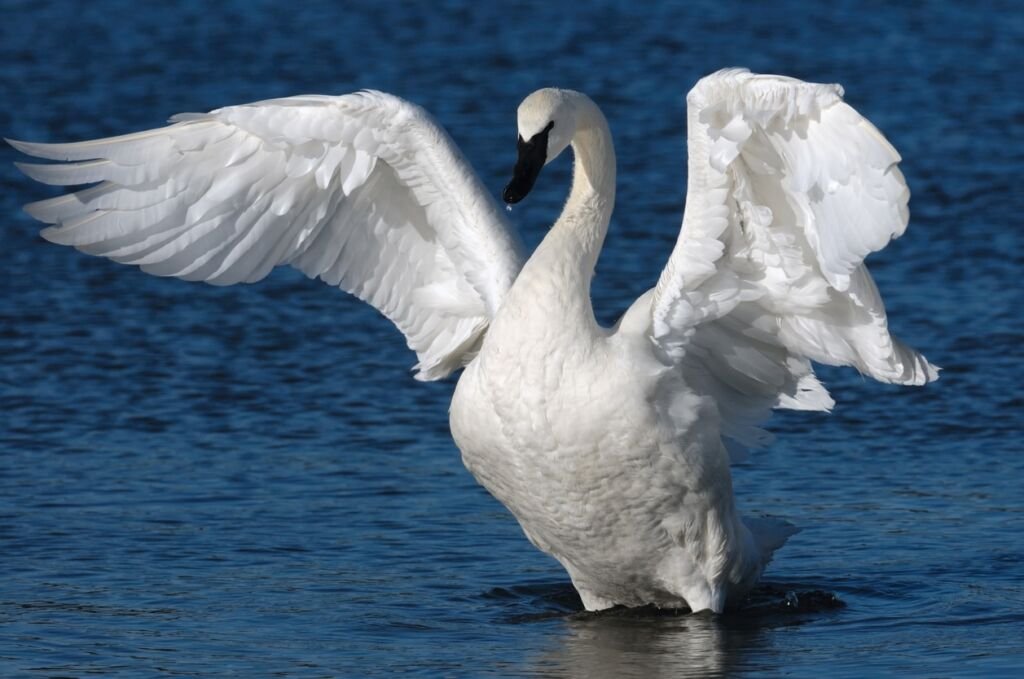
The Most Colorful And Vibrant Birds in Wyoming
1. Red-naped Sapsucker
Red-naped Sapsuckers are medium-sized woodpeckers that grow up to 8 inches long with a 17-inch wingspan and weigh up to 66 grams.
They are primarily black on their back with white patches and have a mottled grey-white chest and belly. They have a bright red throat, cap, and nape. In addition, they have a black stripe through their eye with white stripes above and below.
At one point, the Red-naped Sapsucker, Red-breasted Sapsucker, and Yellow-bellied Sapsucker were a single species but split due to the most recent ice age. Since rejoining habitats, they have started to interbreed again.
Habitat
The Red-naped Sapsucker can be found in mixed forests at higher elevations and will stay in logged forests as long as some trees are still standing.
Medicine Bow National Forest has many trails, including the Snowy Range Scenic Byway, which is an excellent location in Wyoming to see the Red-naped Sapsucker.
Endangered Status
Red-naped Sapsuckers are not endangered and have a worldwide population of around 2 million, though the population is declining.

2. Yellow-rumped Warbler
Yellow-rumped Warblers are small birds but large warblers. They can grow to be 5.5 inches long with a 9-inch wingspan and weigh up to 13 grams. There are several sub-species of Yellow-rumped Warbler, with the most common in Wyoming being the Audubon’s Warbler.
They have a grey-blue back with a bright yellow crown, sides, and rump. During winter, the yellow can fade to a less vibrant color.
It’s possible for the various Yellow-rumped Warblers to share locations and some interbreeding has happened, creating hybrids.
Habitat
Yellow-rumped Warblers can be found in open coniferous forests during summer. During winter, they will move to open woods, coastal areas, parks, and even residential areas, especially if there are bird feeders available.
They are a common sight at Yellowstone National Park, Grand Teton National Park, and Devil’s Tower National Monument in Wyoming.
Endangered Status
The Yellow-rumped Warbler is not endangered and has an estimated worldwide population of 150 million; it’s considered to be the most common warbler. Midwest populations have been declining since the 1970s though.
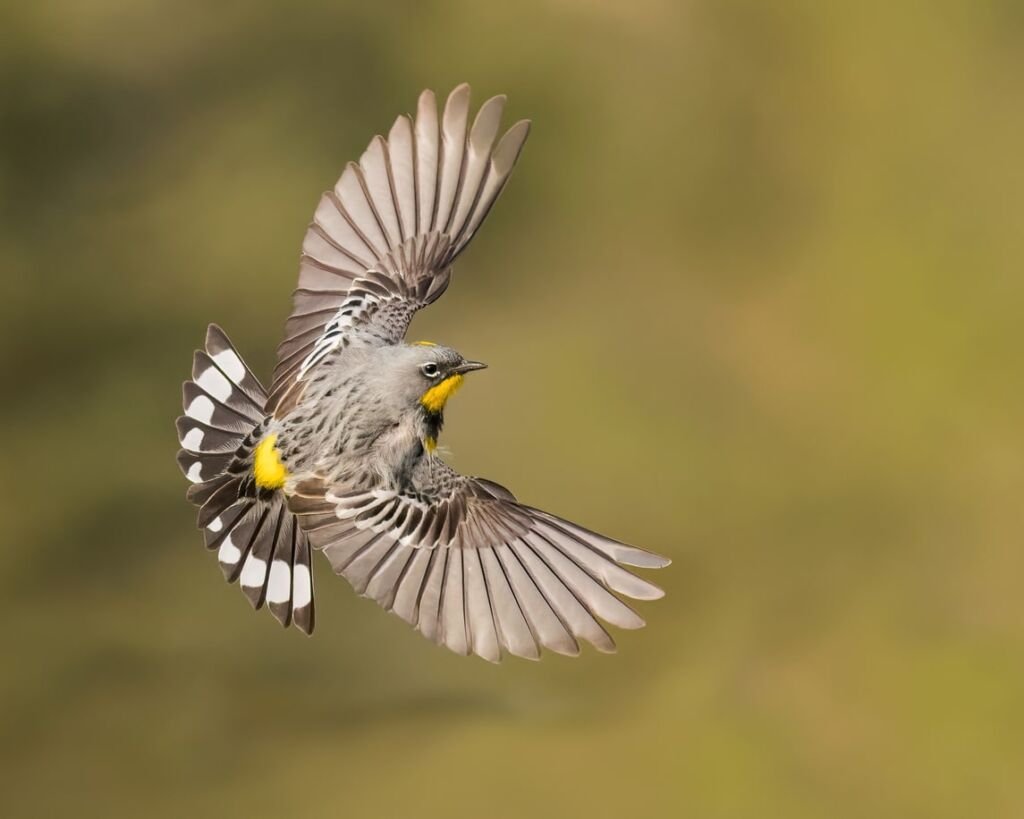
3. Ruby-throated Hummingbird
Ruby-throated Hummingbirds can grow to be 3.5 inches long with a wingspan of 4.3 inches and weigh up to 4 grams. It has metallic green upper feathers, greyish white lower feathers, black wings, and a ruby-colored throat patch.
Interestingly enough, the ruby throat patch is highly directional, so it can appear black until you move to a different location where it will appear bright ruby red.
Habitat
Ruby-throated Hummingbirds prefer to breed in deciduous and pine forests towards the edges, as well as in orchards and gardens. It does migrate during winter as far as Florida or Mexico.
Endangered Status
The Ruby-throated Hummingbird is not endangered and has an increasing population of around 36,000,000.

4. Red Crossbill
Red Crossbills are medium-sized songbirds in the finch family, and they can grow to be 8 inches long with a 12-inch wingspan and weigh up to 55 grams.
Males are a mottled red all over with darker red wings, while the females have brown-olive feathers all over but also have darker wings.
The size of their beaks, and even the calls they make, can vary a lot. So it’s often challenging to determine if you see a Red Crossbill if you’re not familiar with the species. One distinctive feature is that the mandibles, or top and bottom bills, cross at the tips.
The Red Crossbill will feed in flocks, looking for conifer seeds or grit on the ground. They will fly together from tree to tree while feeding. There will often be males sitting higher in trees looking for and singing out if any predators approach.
Habitat
They’re most often found in coniferous forests at higher elevations, but it’s possible to see them in your backyard feeder when food is low.
When visiting Wyoming, some of the best places to spot Red Crossbills are Yellowstone National Park, Grand Teton National Park, and Devil’s Tower National Monument.
Endangered Status
Red Crossbills are not endangered, with a global population estimated at 26 million.
5. Mountain Bluebird
Mountain Bluebirds are small thrushes that can grow to 8 inches long with a 14-inch wingspan and weigh up to 30 grams.
Males are sky blue with slightly darker wings and lighter on their chests and bellies. Females are grey-brown with hints of blue in their wings and tail.
Mountain Bluebirds prefer preexisting cavities to build their nests, including old woodpecker cavities or even human-provided birdboxes. They’re also not afraid of humans and won’t leave an area if humans are around.
Habitat
Mountain Bluebirds are extremely common throughout Wyoming. They can be found in open areas and, as the name suggests, enjoy mountainous regions.
Some of the best places in Wyoming to find them are Yellowstone National Park, Grand Teton National Park, Seedskadee National Wildlife Refuge, Keyhole State Park, Devil’s Tower State Monument, and the Medicine Bow National Forest.
Endangered Status
Mountain Bluebirds are not endangered, with a global population estimated at 4.6 million. Up to 80% of the total population will spend some part of the year in the US; otherwise, they are in Canada or Mexico.

Rare Birds In Wyoming
There’s a vast range of birds in Wyoming, but some are rarer to spot than others. That’s either due to the limited time they spend in the state or due to being an endangered species that is rare everywhere.
You may spot some of the birds listed below if you are in the right location at the right time of the year.
1. Great Crested Flycatcher
The Great Crested Flycatcher is a medium-sized bird with a fondness for insects. It can grow up to 8 inches long with a 13-inch wingspan and can weigh up to 40 grams. They have brown upper feathers with yellow lower feathers and a grey throat and upper chest. Their tails are rusty-brown.
While its name suggests a preference for flies, it actually prefers to eat bees, wasps, months, and even butterflies.
Habitat
Great Crested Flycatchers prefer deciduous forests with somewhat open canopies and can also be found in mixed woodlands. Wyoming is slightly too west for their typical habitat, but they can often be found at the Wyoming Hereford Ranch.
Endangered Status
The Great Crested Flycatcher is not endangered but is rare in Wyoming. It’s estimated the worldwide population is between 500,000 – 1,000,000.

2. Prothonotary Warbler
Prothonotary Warblers are small, brightly colored songbirds, but are quite large for warblers. They can grow to be 5 inches long with a 9-inch wingspan and weigh up to 13 grams. Compared to other warblers they have shorter tails and legs, but their beak is larger and heavier.
They are a bright gold-yellow with blue-grey wings and tail, and their backs are yellow-olive. Females are slightly more subdued in color than males.
The Prothonotary Warbler will nest in natural or artificial cavities, which is unusual for warblers. They will also build a number of fake nests in the area with a single hidden real nest for breeding.
Habitat
Prothonotary Warblers prefer to feed in standing or slow-moving water, so they can be found in wooded swamps or wooded areas near streams, lakes, or ponds. In Wyoming, a great place to find them is the Wyoming Hereford Ranch, an excellent location for many of the rare birds in the state.
Endangered Status
Prothonotary Warblers are not endangered but are rare in the western and midwest US states. The population is estimated to be 1.6 million but has declined by 1% each year since 1966.

3. Philadelphia Vireo
Philadelphia Vireo’s are small and stocky songbirds that can be 5 inches long with an 8-inch wingspan and weigh up to 12 grams. They are olive-brown on their upper feathers and have yellow lower feathers with a grey crown.
While the name may suggest they call Philadelphia home, they are not often found there unless passing through during migration. Which is the same reason you may find them in Wyoming.
Habitat
You may find these birds in any wooded habitats, though their preference is mixed woodlands. A great location where they can be spotted is the Wyoming Hereford Ranch.
Endangered Status
Philadelphia Vireo are not endangered, with a worldwide population of around 4 million. However, they’re rare to spot in Wyoming except during spring and fall migration.


